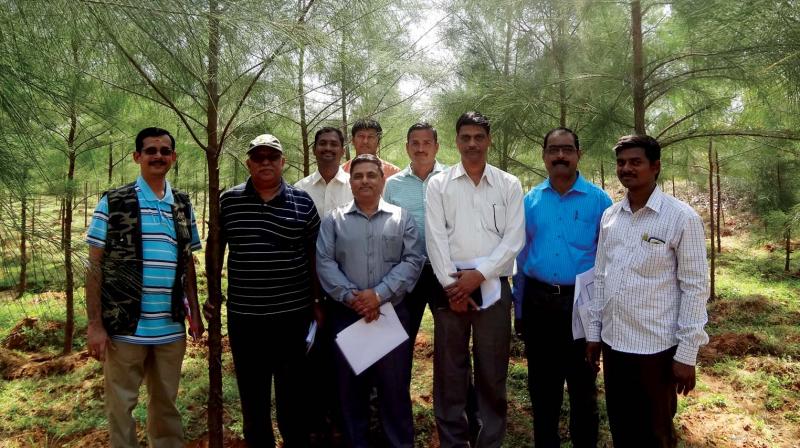New salt-resistant casuarina may protect Kerala coast

KOCHI: Scientists at the Institute of Forest Genetics and Tree Breeding (IFGTB), Coimbatore, have developed high salt level-tolerant clones of casuarina (Kattady) for the first time in the country, offering a potential solution to sea erosion on Kerala coast. They also give better yield of wood than traditional ones.
The salt-tolerant clones were recently released after selection and repeated field testing for the past 20 years, said senior principal scientist and principal investigator of the research programme Dr Kannan C.S. Warrier.
As per the data, about 20,000 hectares of area in Kerala is afflicted with salinity with Alappuzha, Ernakulam, Thrissur and Kannur districts being the affected districts. “Though Casuarina is identified as salt-tolerant tree species, substantial intra-specific variation in salt tolerance exists,” said Dr Warrier.
Use of Casuarina in environmental protection was realised after the tsunami and is now a major component in coastal afforestation programmes in the country.
“Research on identification of salt-tolerant clones of Casuarina started in 1998. It was found the yield of paddy grown in the same field, after completion of the testing of Casuarina, increased by 45 per cent. Three productive and salt-tolerant clones (IFGTB CE-5, 6 and 7) were released in 2014, after experiments, which were further tested in six locations. Five paper mills which use casuarina as major raw material were involved in testing. While casuarina plantations raised from mongrel seeds yield around 100 tonnes of wood per hectare at the end of 4 years, these newly-released clones shall yield 35-40 per cent more in salt affected sites at 3 years. The experiments were concluded by end of 2018,” Dr Warrier added.
India is the largest casuarina growing country with an estimated 800,000 ha of plantations. Its wood is being extensively used for purposes as fuel wood and pulpwood.
Plantations of the species are raised along the coastal regions of West Bengal, Odisha, Maharashtra, Andhra Pradesh, Tamil Nadu, Kerala and Karnataka since about two to three rows of Casuarina belt can strip off a strong wind of its force.

